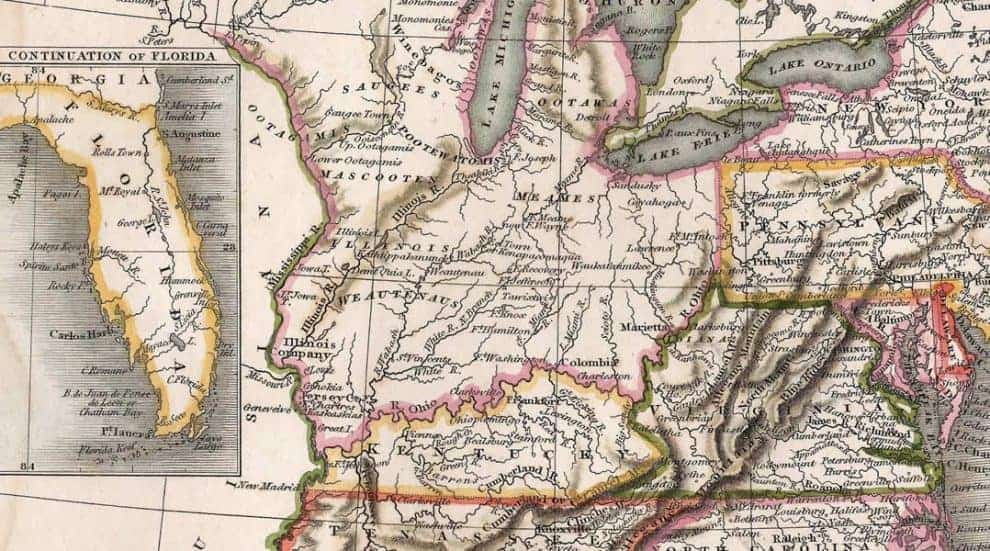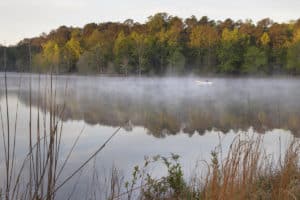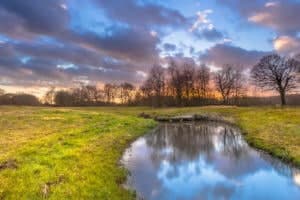One of the most important pieces of legislation from Congress that made a lasting impact on private property ownership in the United States was enacted in May 1785. The Land Ordinance was an effort on the part of the Confederated Congress to raise much needed funds for our fledgling country and to promote settlement of our western territories.
In 1785, Congress did not yet have the power to levy taxes, but there was a desperate need to find ways to meet the financial obligations of our burgeoning nation. The US had recently received a massive amount of land from the British as a result of the Treaty of Paris in 1783. Our nation was land rich but cash poor, so prominent statesmen such as Thomas Jefferson and James Madison helped develop a framework for converting this land into cash.
A plan was developed to create a systematic survey of our newly acquired lands that lay west of the Appalachian mountains, east of the Mississippi River, north of the Spanish controlled Florida, extending all the way to the southern boundary of Canada. Below are a few of the portions of the act that I consider to be highlights.
- A rectangular survey system was created that divided the territory into 36 square mile areas called Townships. Each Township had 36 “lots” or “sections” that were 1 mile square consisting of 640 acres each. Thomas Jefferson had originally proposed townships that were 7 miles on each side, but that was rejected for the system that we currently use.
- Each section was to be sold to the public for settlement for no less than $1 per acre. This proved to be too much land for a single family to purchase and clear, and the cost was prohibitive for all but the wealthiest citizens.
- Perhaps the most fascinating to me, and what demonstrates amazing foresight was that Congress designated the 16th section of every township to be used to fund public education. This section was reserved for the local government to be able to sell land, timber, or minerals and use the proceeds as revenue to develop and maintain an education system for the region.
- Congress also reserved four sections of every township: the 8th, 11th, 26th, and 29th sections to be held for the federal government’s future use or disposition. Their theory was that if all of the other sections around them were sold and developed, that the property the government owned would increase in value. In essence, this was land speculation by Congress. In addition to retaining these four sections in each township, the US reserved 1/3 of the gold, copper, silver and lead mined on these lands.
- This act had a specific template for the conveyance of the property patent from the government to the individual purchaser. The verbiage on these conveyances will look familiar to anyone who frequently reads deeds. The deed language has lasted over 200 years and much of it is incorporated into our current conveyance documents.
There is much more that could be written about the historical importance of the Land Ordinance, but the lasting legacy is the strenuous efforts to survey, describe and convey these lands for the good of the public. The new survey system that was developed would later be applied to over 75% of the land in the United States. This act laid the foundation for the Public Land Survey System (PLSS) that is still used in most of the country.
Our Founding Fathers were truly wise men, and their passion for private land ownership and the development of this nation is a lasting heritage that we enjoy even today.
This content may not be used or reproduced in any manner whatsoever, in part or in whole, without written permission of LANDTHINK. Use of this content without permission is a violation of federal copyright law. The articles, posts, comments, opinions and information provided by LANDTHINK are for informational and research purposes only and DOES NOT substitute or coincide with the advice of an attorney, accountant, real estate broker or any other licensed real estate professional. LANDTHINK strongly advises visitors and readers to seek their own professional guidance and advice related to buying, investing in or selling real estate.










Jonathan, thanks for the information and history. Is the 1/3 mineral reserve still in force?
Keep up the good work and make everyday happy and prosperous